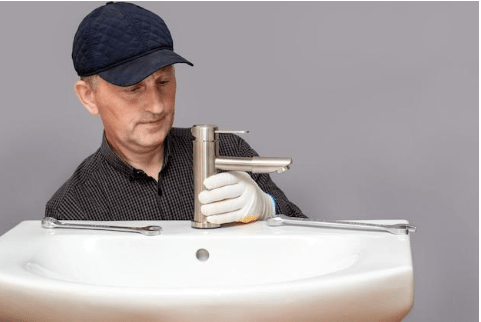
How To Remove a Kitchen Faucet Without Screws?
If you’re updating your kitchen and want to remove the old faucet, you’ll need to know how to remove a kitchen faucet without screws. Installing a new faucet usually requires special tools and fixtures that are easy to find at any home repair store. You won’t need to get inside the sink or use any unique skills. If you’re replacing a damaged faucet, rather than removing it completely, you might be able to reuse existing fasteners with a little creativity. If not, read on for tips on how to remove the best brass kitchen faucets without screws and other fasteners. You won’t need much: Some glue, an old towel, and maybe some duct tape will be enough.
Have a Handy Person Standing By
Why? Because when you are trying to remove the faucet, the entire weight of the pipe will be pressing against the wall of the sink bowl. You may be able to muscle it off, but you want to be safe. A second person can hold the pipe off the wall, relieving a lot of stress on your wrists while you work. If you don’t have a helper, wear a pair of gloves while you work to protect your hands.
Drying Out the Pipes
If the pipe is wet, you can’t get a grip on it, so the first step is to let it dry out. The best way to do that is to find the shut-off valve for that part of the sink. If you have a single shut-off valve for both hot and cold water, you’ll have to shut off the water to the entire house. If the sink has its own shut-off valves, turn off just the hot water. Let the water drain out of the pipes for a few minutes, then turn the water back on. Turn off the water again when you’re ready to get started removing the faucet. If you don’t have separate shut-off valves for the sink, you’ll have to wait for the water to drain out of the pipes.
Pull Out the Faucet Shaft and Spray Hoses
You’ll find the nuts that hold the faucet to the sink under the faucet arms on the side of the sink. If you don’t see any nuts there, you’re probably removing a faucet with a pull-out spout. In that case, the nuts are on the back of the faucet. Next, use a wrench to loosen and remove the nuts. If you don’t have a wrench, wrap a piece of duct tape around a screwdriver to create a makeshift wrench.
You can also use pliers, but they won’t grip as tightly, so you’ll have to use more force to turn the nuts. Carefully remove the spray hoses or the faucet body. If the hoses are loose, you can leave them attached to the old faucet and just move them to the new faucet. If the hoses are glued to the faucet, you may need to cut them off.
Grab Some Duct Tape
You don’t need special tools to remove a kitchen faucet that’s held in place with nuts and washers. If you can’t reuse the old mounting hardware, you can use duct tape to hold the new faucet in place. Wrap it around the faucet body and the sink wall where the old nuts were. If there are no mounting holes for the faucet, you’ll need to use some glue. You’ll need to clean the sink wall first. Then, apply a non-toxic epoxy or construction adhesive to the mounting holes on the faucet and let it dry before you try to attach the faucet.
Use a Little Glue
If you’re replacing a wall-mount faucet and you can’t reuse the old mounting hardware, you’ll need to secure the faucet with some glue. Epoxy or construction adhesives work well, but you’ll need to make sure they’re compatible with metal faucets. If you’re replacing a sink faucet and it doesn’t have holes for mounting, you’ll probably have to use glue. Choose a non-toxic glue to avoid toxic fumes when you install the faucet. You can also use glue to secure a new faucet if you have the old mounting hardware. The faucet is likely to be installed more securely with glue.




